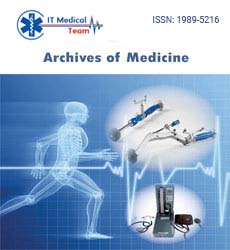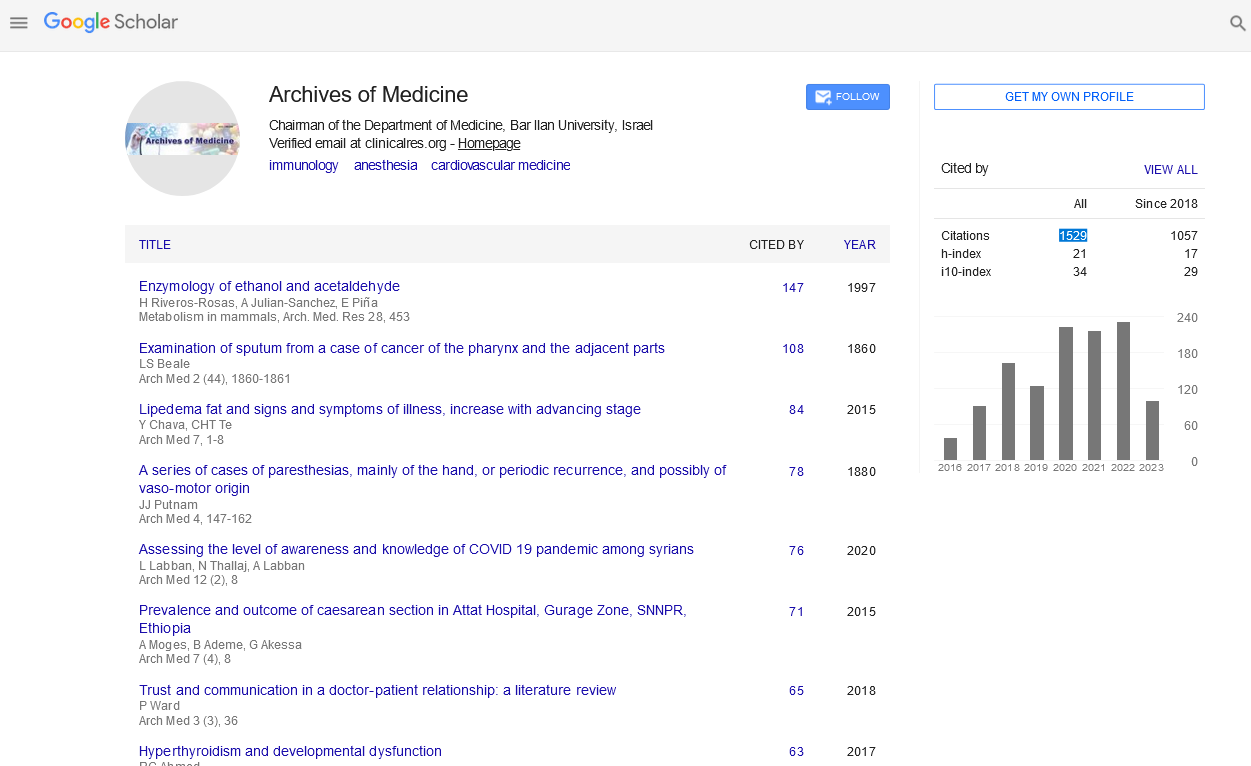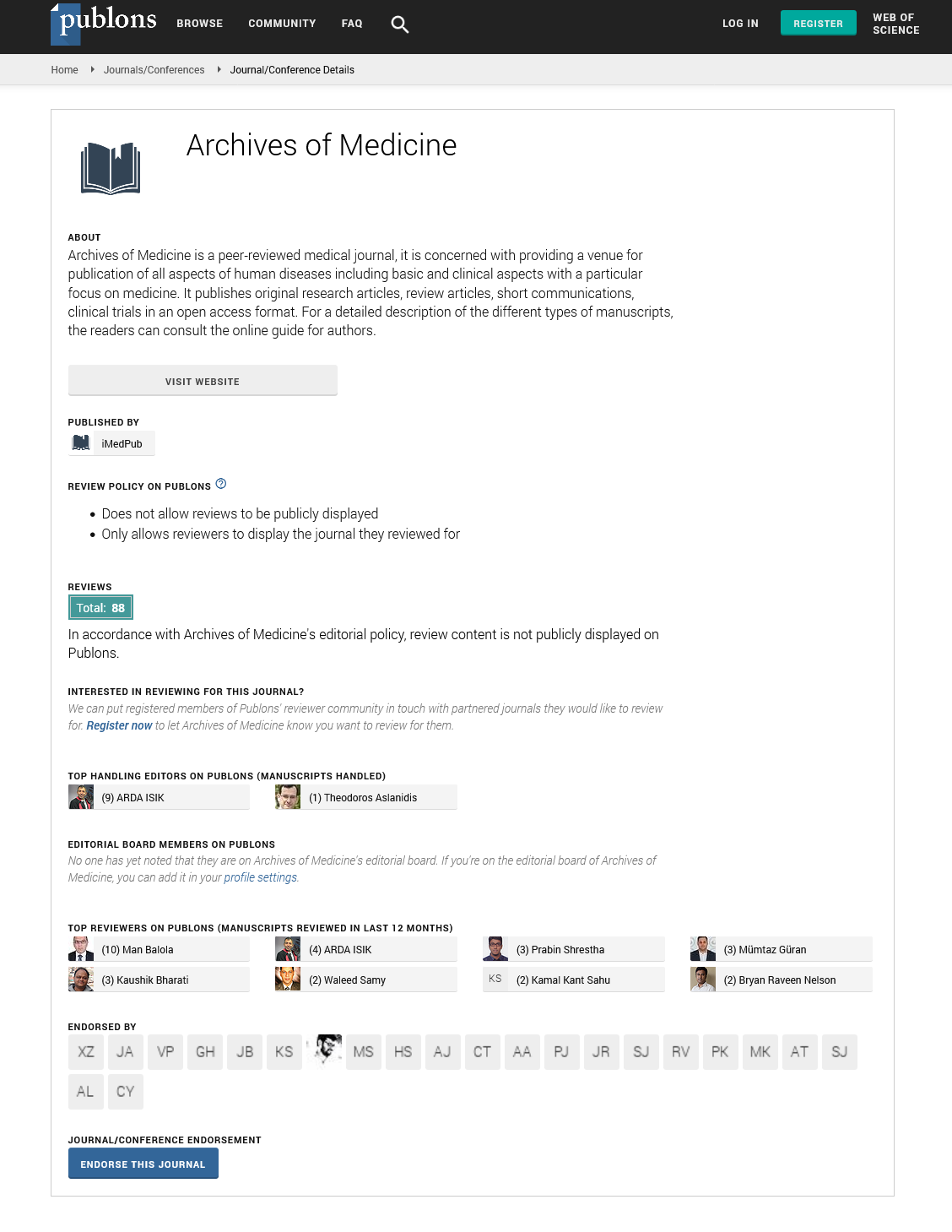Opinion - (2024) Volume 16, Issue 6
Breaking barriers in healthcare access: Addressing health inequality in rural communities
Liana Clark*
Department of Global Health and Population, Harvard T.H. Chan School of Public Health, Boston, MA, USA, USA
*Correspondence:
Liana Clark, Department of Global Health and Population, Harvard T.H. Chan School of Public Health, Boston, MA, USA,
USA,
Email:
Received: 24-Oct-2024, Manuscript No. ipaom-25-15459;
Editor assigned: 27-Oct-2024, Pre QC No. P-15459;
Reviewed: 07-Nov-2024, QC No. Q-15459;
Revised: 12-Nov-2024, Manuscript No. R-15459;
Published:
19-Nov-2024
Introduction
Healthcare access remains one of the most critical and
complex challenges faced by rural communities on a global
scale. Despite significant strides in medical technology and
improvements in healthcare delivery systems within urban
environments, rural populations persistently encounter
substantial disparities in health outcomes and access to
essential healthcare services. A combination of factors,
including geographical remoteness, limited availability of
healthcare facilities, severe shortages of medical professionals,
and pronounced socio-economic inequalities, continues to
exacerbate these disparities. The impacts of limited healthcare
access in rural areas are profound and multifaceted, often
manifesting in elevated rates of chronic illnesses, diminished
life expectancy, and overall inferior health outcomes
compared to urban populations. These healthcare disparities
do not merely reflect gaps in service provision but reveal
broader systemic inequities that require urgent and sustained
attention. This article delves into the underlying causes
and multifactorial nature of barriers to healthcare in rural
communities. It further underscores the importance of adopting
innovative policies, fostering technological integration, and
developing comprehensive community-based strategies
aimed at dismantling these persistent obstacles. By exploring
effective models and initiatives that have shown promise in
bridging the urban-rural healthcare divide, the article aspires
to contribute to the ongoing dialogue on equitable healthcare
access. Addressing these inequalities is not just a matter of
improving individual health outcomes but is fundamental to
fostering more resilient, healthier communities and advancing
social justice across diverse populations [1].
Description
One of the primary barriers to healthcare access in rural
communities is the shortage of healthcare facilities and
professionals. Rural areas are often underserved, with fewer
hospitals, clinics, and primary care providers available to meet
the needs of the population. According to studies, rural residents
are less likely to have access to specialized medical services,
preventive care, and emergency treatment. This lack of access
leads to delayed diagnoses and treatment, exacerbating health
conditions that could have been managed effectively if detected
earlier. Additionally, the shortage of healthcare professionals,
particularly specialists, forces patients to travel long distances
to receive care, which can be both time-consuming and costly.
Economic disparities further compound the issue of healthcare
inequality in rural areas. Rural populations often experience
higher levels of poverty and unemployment compared to
urban populations, which can limit their ability to afford
healthcare services, insurance, and medications. Many rural
residents are uninsured or underinsured, making healthcare
costs prohibitively expensive. This economic vulnerability
often results in individuals forgoing medical care until their
conditions become critical, placing an additional strain on rural
healthcare systems and increasing the overall cost of care in the long run [2].
Transportation and geographical isolation also play a
significant role in limiting healthcare access. The vast distances
between rural communities and healthcare facilities can pose
significant logistical challenges for patients seeking medical
attention. In cases of medical emergencies, this distance can
mean the difference between life and death. Additionally,
poor infrastructure and lack of reliable public transportation
options make it even more difficult for residents to reach
healthcare services regularly. Cultural and educational barriers
are also contributing factors to healthcare disparities in rural
communities. Health literacy levels in rural populations tend
to be lower, leading to misunderstandings about preventive
care, medication adherence, and the importance of regular
health check-ups. Furthermore, cultural beliefs and mistrust of
medical institutions may deter some individuals from seeking
medical attention, further widening the gap in health outcomes
[3].
Addressing these challenges requires a multifaceted
approach that leverages technology, policy reforms, and
community engagement. Telemedicine has emerged as a
powerful tool in bridging the healthcare gap between rural
and urban areas. By enabling remote consultations and virtual
appointments, telemedicine can provide rural residents with
access to medical professionals without the need for travel.
This technology has proven particularly beneficial in managing
chronic diseases, providing mental health services, and
facilitating specialist consultations. However, for telemedicine
to be fully effective, investments in digital infrastructure,
internet connectivity, and community training are essential. In
addition to technological solutions, policy reforms aimed at
incentivizing healthcare professionals to work in rural areas can
help address workforce shortages. Programs that offer student
loan forgiveness, housing assistance, and financial incentives
for healthcare workers who choose to practice in underserved
regions have shown promise in attracting and retaining medical
professionals in rural communities. Expanding medical training
programs to focus on rural health and encouraging students
from rural backgrounds to pursue careers in healthcare can also
help build a more sustainable workforce [4].
Community-based initiatives are another critical component
of improving healthcare access in rural areas. Mobile health
clinics, community health worker programs, and partnerships
with local organizations can bring essential medical services
directly to rural populations. These initiatives not only provide
healthcare but also help build trust within the community,
improve health literacy, and address the social determinants
of health. Public health campaigns targeting preventive care,
vaccination, and chronic disease management can play a vital
role in reducing the burden on rural healthcare systems. By
empowering communities with knowledge and resources,
preventive measures can significantly decrease the incidence
of diseases that disproportionately affect rural populations [5].
Conclusion
Healthcare inequality in rural communities is a
multifaceted issue that requires comprehensive, sustained,
and innovative solutions to make meaningful progress. The
interplay between healthcare professional shortages, economic
disparities, transportation challenges, and cultural factors
forms a complex web of barriers that must be addressed
holistically. Without proactive intervention, rural populations
will continue to experience limited healthcare access, resulting
in negative health outcomes, lower quality of life, and reduced
economic productivity. Addressing these issues can unlock
transformative potential for rural communities, improving
not only health outcomes but also broader social welfare
indicators. Efforts to bridge this gap must prioritize a blend of
traditional healthcare approaches and emerging technologies,
such as telemedicine and mobile health units. Expanding
access to virtual care services not only reduces travel burdens
but also alleviates pressure on limited healthcare facilities in
remote areas. Telemedicine has the potential to revolutionize
healthcare delivery, offering timely medical consultations and
fostering stronger connections between patients and healthcare
providers. Additionally, community-based initiatives can
enhance local engagement, promote trust, and drive public
health education efforts, ensuring that rural residents are
equipped to make informed health decisions.
Economic incentives and policy reforms also play a pivotal
role in recruiting and retaining healthcare professionals in
underserved areas. Expanding financial support for medical
students from rural backgrounds, alongside establishing robust
support networks for practitioners working in remote settings,
can create a sustainable pipeline of healthcare providers.
Programs that focus on reducing student debt, providing housing
subsidies, and ensuring professional development opportunities
for rural healthcare workers are vital to mitigating workforce
shortages. Furthermore, partnerships between government
agencies, healthcare organizations, and academic institutions
can foster innovative solutions, addressing systemic disparities
and promoting long-term healthcare equity. A comprehensive
approach must also include targeted public health initiatives
that emphasize prevention and early intervention. Campaigns
focusing on chronic disease management, vaccination, mental
health awareness, and maternal care can significantly reduce
the burden on rural healthcare infrastructure by preventing
the escalation of manageable conditions. Collaboration
between local leaders, public health officials, and community
organizations is essential to ensure that these initiatives
resonate with the specific cultural and social dynamics of each
rural community.
Ultimately, ensuring that all individuals, regardless of their
geographical location, have access to quality healthcare is
fundamental to fostering a more equitable, just, and healthier
society. The challenges facing rural healthcare are substantial,
but through coordinated, innovative, and community-centered
approaches, these barriers can be dismantled. As efforts to
improve healthcare access continue to evolve, fostering close
collaboration between governments, healthcare providers,
and local communities will be indispensable in achieving
sustainable and impactful improvements in rural healthcare
outcomes. Such an approach not only promises better
individual health but also enhances the resilience and vitality
of rural populations as a whole.
Acknowledgment
None.
Conflict of Interest
None.
References
- Richman L, Pearson J, Beasley C, et al. Addressing health inequalities in diverse, rural communities: An unmet need. SSM-Popul Health. 2019 1;7:100398.
Google Scholar, Crossref, Indexed at
- Bhatia S, Landier W, Paskett ED, et al. Rural–urban disparities in cancer outcomes: Opportunities for future research. J Natl Cancer Inst. 2022 1;114(7):940-52.
Google Scholar, Crossref, Indexed at
- Wiese LA, Gibson A, Guest MA, et al. Global rural health disparities in Alzheimer's disease and related dementias: State of the science. Alzheimers Dement. 2023;19(9):4204-25.
Google Scholar, Crossref, Indexed at
- Wong Shee A, Donaldson A, Clapham RP, et al. Identifying health and healthcare priorities in rural areas: A concept mapping study informed by consumers, health professionals and researchers. Health Res Policy Syst. 2024 13;22(1):105.
Google Scholar, Crossref, Indexed at
- Kornelsen J, Carthew C, Lloyd-Kuzik N. Optimizing Community Participation in Healthcare Planning, Decision Making and Delivery through Rural Health Councils. Healthc Policy. 2022;18(2):27.
Google Scholar, Crossref, Indexed at






